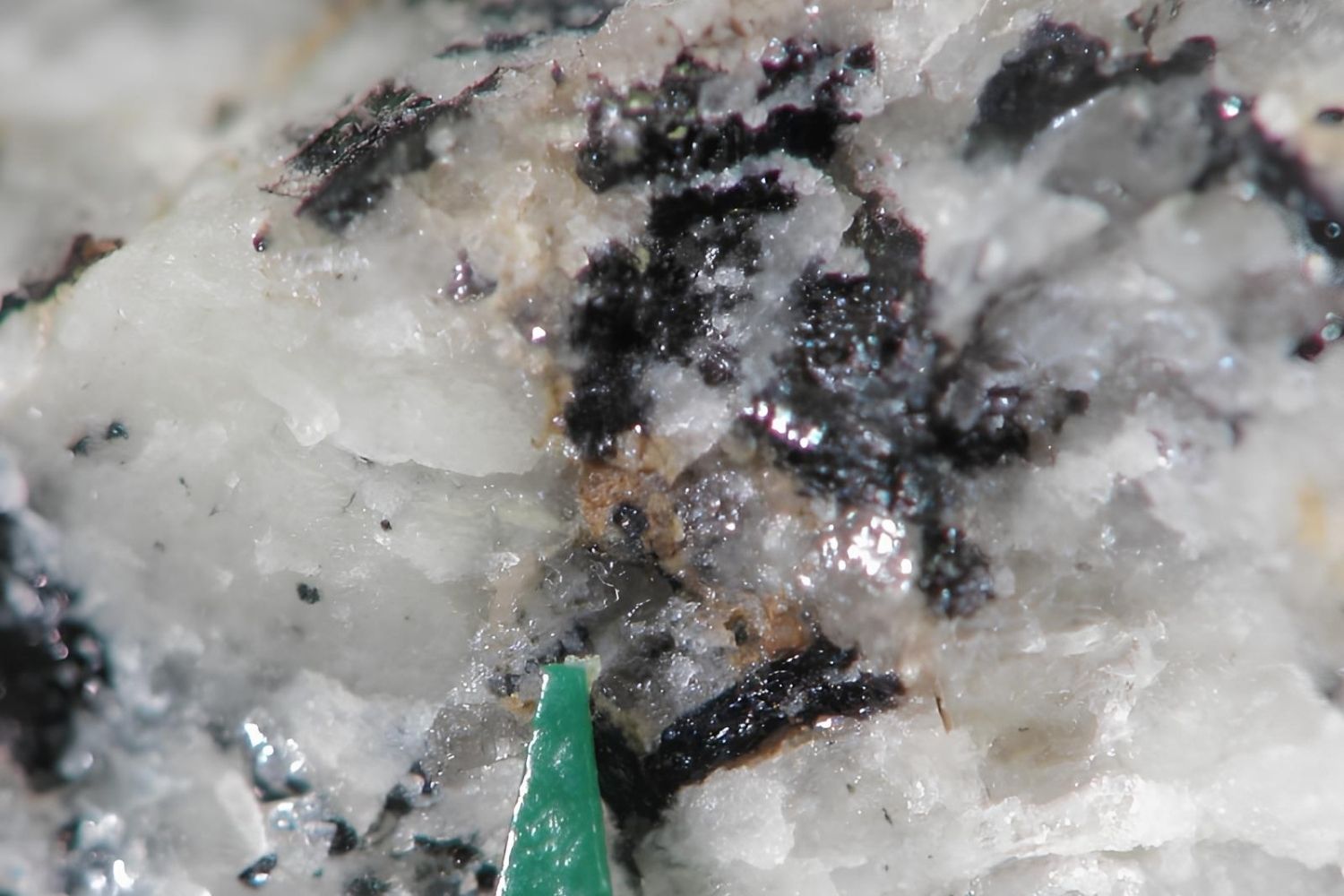
Gagarinite-(Ce) is a rare mineral named after the famous Russian cosmonaut Yuri Gagarin. This fascinating mineral, part of the fluorocarbonate group, contains cerium, a rare earth element. Found primarily in Russia, it has a unique crystal structure that intrigues geologists and collectors alike. Gagarinite-(Ce) typically appears in shades of yellow, brown, or green, adding to its allure. Its discovery has provided valuable insights into the geological processes that form rare earth minerals. Whether you're a budding geologist or just curious about Earth's hidden treasures, these 30 facts about Gagarinite-(Ce) will surely captivate your interest.
Key Takeaways:
- Gagarinite-(Ce) is a rare mineral named after Yuri Gagarin, the first human in space. It's found in Russia, Canada, and Norway, and its discovery helps scientists understand rare earth elements and geological processes.
- This mineral, with a color ranging from pale yellow to brownish-yellow, is important for its role in high-tech applications and historical significance. Its rarity and unique properties make it valuable for both science and culture.
What is Gagarinite-(Ce)?
Gagarinite-(Ce) is a rare mineral named after the famous Soviet cosmonaut Yuri Gagarin. It belongs to the group of minerals known as silicates and is primarily composed of cerium, a rare earth element. This mineral is fascinating not only for its unique properties but also for its historical significance.
- Gagarinite-(Ce) was discovered in 1961, the same year Yuri Gagarin became the first human to journey into outer space.
- The mineral's chemical formula is NaCaCeSi6O15F.
- It typically forms in pegmatites, which are coarse-grained igneous rocks.
- Gagarinite-(Ce) is often found in association with other rare earth minerals like bastnäsite and monazite.
- Its color ranges from pale yellow to brownish-yellow.
- The mineral has a vitreous to greasy luster, making it visually appealing.
- Gagarinite-(Ce) is relatively hard, with a Mohs hardness of 5 to 6.
- It has a specific gravity of about 3.2 to 3.4, indicating it is denser than average rock-forming minerals.
- The mineral is named in honor of Yuri Gagarin to commemorate his historic spaceflight.
Where is Gagarinite-(Ce) Found?
Gagarinite-(Ce) is not a common mineral and is found in specific geological settings. Its rarity adds to its allure among mineral collectors and geologists.
- The first specimens were discovered in the Kola Peninsula in Russia.
- Significant deposits have also been found in Canada, particularly in Quebec.
- Norway is another country where Gagarinite-(Ce) has been located.
- Smaller occurrences have been reported in the United States, specifically in Colorado.
- The mineral is often extracted from complex pegmatite deposits.
- It is usually found in small quantities, making large specimens quite rare.
- Gagarinite-(Ce) is often mined alongside other rare earth elements.
- The mineral is typically extracted through traditional mining methods.
- Its rarity makes it a valuable find for mineralogists and collectors alike.
Why is Gagarinite-(Ce) Important?
Gagarinite-(Ce) holds significant scientific and economic value. Its unique properties and composition make it a subject of interest in various fields.
- The mineral is a source of cerium, a rare earth element used in various high-tech applications.
- Cerium is essential in the production of catalytic converters for automobiles.
- It is also used in the manufacturing of glass and ceramics.
- Gagarinite-(Ce) helps scientists understand the geological processes that form rare earth minerals.
- The mineral's discovery contributed to the study of pegmatite formations.
- It provides insights into the distribution of rare earth elements in the Earth's crust.
- Gagarinite-(Ce) is used in research to develop new materials with unique properties.
- Its study can lead to advancements in mineral extraction and processing techniques.
- The mineral's historical connection to Yuri Gagarin adds a cultural and historical dimension to its significance.
How is Gagarinite-(Ce) Identified?
Identifying Gagarinite-(Ce) requires a combination of visual inspection and scientific analysis. Its unique characteristics make it distinguishable from other minerals.
- The mineral's pale yellow to brownish-yellow color is a key identifying feature.
- Its vitreous to greasy luster helps differentiate it from other silicates.
- Gagarinite-(Ce) can be identified through X-ray diffraction, which reveals its crystal structure.
Gagarinite-(Ce) Facts Recap
Gagarinite-(Ce) is a fascinating mineral with a unique composition and history. Named after Yuri Gagarin, the first human in space, this mineral captures the imagination of both scientists and enthusiasts. Found primarily in Russia, it boasts a complex chemical structure featuring cerium, sodium, calcium, and fluorine. Its rarity and distinct properties make it a subject of ongoing research.
Understanding Gagarinite-(Ce) helps us appreciate the diversity of minerals on Earth. Its discovery and subsequent studies contribute to our knowledge of geology and mineralogy. Whether you're a student, a hobbyist, or a professional, knowing these facts enriches your understanding of the natural world.
So next time you hear about Gagarinite-(Ce), you'll know it's more than just a name—it's a piece of Earth's intricate puzzle. Keep exploring and stay curious!
Frequently Asked Questions
Was this page helpful?
Our commitment to delivering trustworthy and engaging content is at the heart of what we do. Each fact on our site is contributed by real users like you, bringing a wealth of diverse insights and information. To ensure the highest standards of accuracy and reliability, our dedicated editors meticulously review each submission. This process guarantees that the facts we share are not only fascinating but also credible. Trust in our commitment to quality and authenticity as you explore and learn with us.
